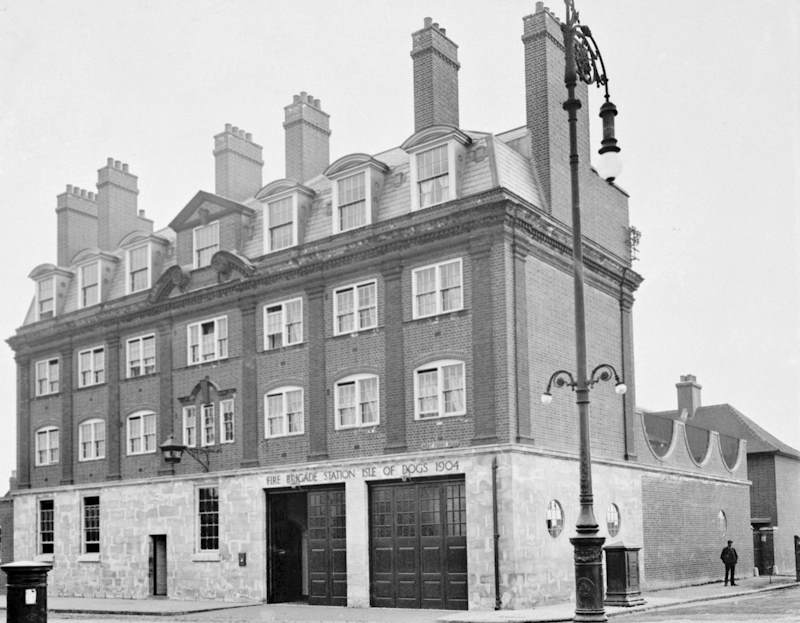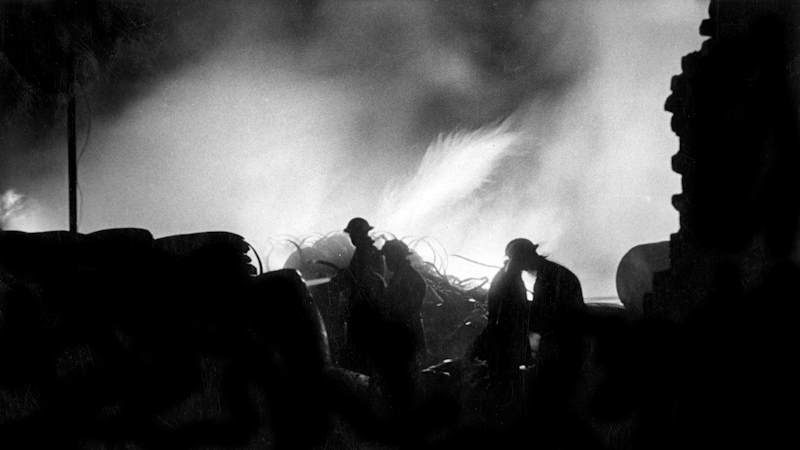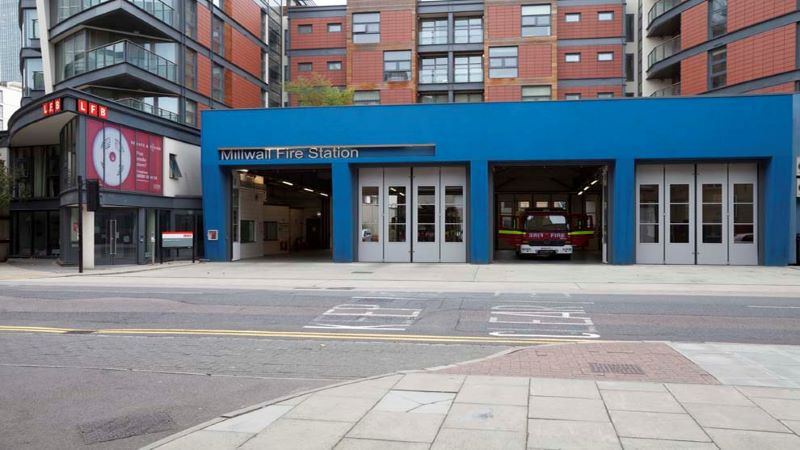Danger at the docks
The need for a fire station on the Isle of Dogs became clear as the Millwall Docks were being built in the 1800s. The contents of the warehouses, and cargo from the ships docking nearby, massively increased the fire risk in the area.
The first Millwall Fire Station opened in 1877 and was located at the junction of Westferry Road and East Ferry Road. It had a single bay door and housed a horse-drawn steam fire engine, a hand-pulled hose-cart and a hand-pushed escape ladder. The station officer, nine firefighters, a coachman, their families and two horses all lived at the station.
A new station

Millwall Fire Station in around 1928
The station was later demolished to accommodate a larger version, which opened in 1904. This station had two appliance bays, cottages for families, stables, and a drill tower. In 1911 the last horse-drawn, hand-operated manual pump to respond to a fire in London turned out from Millwall.
The fire station's location could create a unique situation. It could be cut off from the rest of London if the two swing bridges linking the Isle to the rest of the city closed. Help from other stations could be difficult to come by, and the fire engines also rarely left the ‘island’ to support other crews just in case.
Protecting London during the Second World War
The Auxiliary Fire Service (AFS) formed nationally in 1938. This was part of the Civil Defence Service and was designed to increase firefighting resources in wartime. Fire stations usually had around six sub stations, in local buildings to support the main station, but because of the intensity of bombing and fires in the docks, Millwall had twelve. Some of these were schools including at Harbinger Road and Janet Street. Seven Port of London Authority sub stations were also used.

Fire at Winkley's Wharf, Isle of Dogs, in March 1944 during the Blitz
During the Blitz bombings, the station avoided any major damage, even when many buildings around it were heavily damaged or destroyed. Sadly, the nearby AFS substation in the Cubitt Town School in Saunders Ness Road, did not. Two female AFS personnel Violet Pengelly,19 and Joan Bartlett, 18 were killed, along with more than 20 colleagues. The school suffered a direct hit from a high-explosive bomb on the night of September 18, 1940.
In 1941 the National Fire Service (NFS) was formed and Millwall Fire Station became part of a new nationalised service until 1948 when the NFS was disbanded.
Greater London in 1965
When the Greater London Council was formed in 1965 Divisions were re-organised and Millwall became station F23, in the Eastern Command of London Fire Brigade.
Dudgeon's Wharf
On 17 July 1969 tragedy struck Millwall Fire Station, when crews attended a fire at Dudgeon’s Wharf. A disused oil tank was being demolished and a small fire was burning on the rim of the tank. As the crews were investigating the situation, an explosion occurred, killing five firefighters and a local worker.
Following the tragic events of the explosion, Senior Officer Charles Clisby devised an innovative practical safety system called the Hazchem Code. The Hazchem code stands for ‘Hazardous chemical code’, it is also known as ‘Emergency action code’.
Firefighting today

Millwall Fire Station in 2010
In 2005 a new Millwall Fire Station was opened in Westferry Road. It houses a pump fire engine and is crewed by a Sub Officer, a Leading Firefighter and 5 Firefighters. The 1904 station building is still standing, and is open as a restaurant.